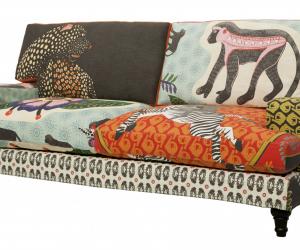
If you don't pay attention to where you're from, you get lost trying to be global. This truism comes from Pentagram partner DJ Stout, who spoke at Design Indaba Conference 2014 about how his work as a publication designer is informed by his locale in Austin, Texas.
This got us thinking. Some of the most striking work we have seen presented on stage at the Conference speaks eloquently about its place of origin. How true is this for all design disciplines? How do other designers see their own sense of place made manifest in their work? From Brasil to South Africa, and Morocco to the UK, we looked into our little black book of creatives across the globe to get their perspectives.
Massoud Hassani, designer based in Eindhoven, Netherlands, originally from Afghanistan
Sense of place is definitely one of the sources of inspiration in what I do everyday. Not only in my design work but also in my daily conversations. It is not like I'm living in the past, but I often find myself going back to some of those incredible scenarios to create and get inspired again. A sense of place is a kind of survival pack that gets you going throughout the creative processes and work. I would describe my sense of place as coming from friends and family, landscape and childhood fun.
Marcelo Rosenbaum, interior and product designer, Sao Paulo, Brazil
A sense of place inspires [me] with its expressions of life. Stories, characters and beauty express that essence of life by moving us through what we can see and touch, something we can experience and feel. For me the three words that capture a sense of place are essence, beauty and love.
Hicham Lahlou, interior, industrial and urban designer, Rabat, Morocco
Most of my designs are not made in Morocco but some of them incorporate a kind of “Moroccan touch”. This is quite impalpable and is directly linked to the notion of identity and territory. An object or concept embodies a mix of visual codes, stylistic approaches, knowledge of heritage and its interpretation, fantasy and values emanating from a particular territory and imaginary identity. This is a complex construct that projects a certain image, based on the designer's interpretation. A sense of place is embodied in character, detail and consistency.
Fée Halsted, ceramist and founder of Ardmore Ceramic Art, Lidgetton, South Africa
We are rural people living in a beautiful area of Kwa-Zulu Natal so our fauna and flora are our subject matter but we are also dependent on each other for survival. Storytelling and day-to-day trials and tribulations in the lives of our artists are also important subject matter for our work. I would describe this sense of place coming from family, creativity and energy.
Rob Alderson, editor-in-chief of It’s Nice That, London, UK
Design is not immune to globalisation; in fact its relationship with technology means it’s potentially more susceptible to aesthetic homogenisation. The nature of trends and universal notions of “good design” (perpetuated, it is claimed, by sites like It’s Nice That) endangers sense of place and localised design identities. But by definition design is a solution, and solutions cannot be divorced from the problems they address, from their context. This is where sense of place comes in and why it is so important; it roots design in its most fundamental reason for existing. Without sense of place, design can still look great, be technically well-executed and even interesting and engaging but it can’t truly be effective.
Josephine Mensah Forson, chief executive officer of Tekura, Accra, Ghana
Tekura’s designs are inspired by our culture and environment. It involves who we are and the experiences our environment throws at us. You can see from our designs that Ghanaian concepts, culture and symbols inspire the development of our products. The uniqueness of our products evolve from our origins and our experiences and are shaped by the spirit of our artisans. They are also inspired by our sense and awareness of being African. Being contemporary helps us to bring our sense of place into modern and functional designs.
Brynjar Sigurðarson, designer and lecturer in Lausanne, Switzerland, originally from Reykjavík, Iceland











